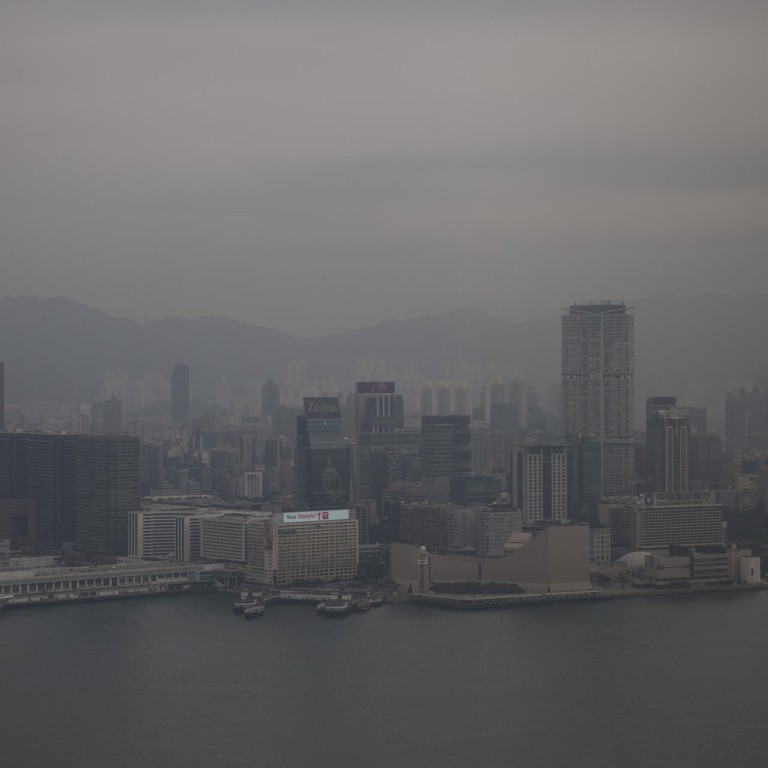
Smartphone app that measures air pollution being developed
It may soon be possible to avoid the worst-affected streets
App developers worldwide are working on technology that will inform users which streets have high levels of air pollution so they can avoid them. The idea is to use a smartphone to find out where you are, and then calculate the level of pollution in nearby areas, drawing on government sensors and weather data.
Leading the way is the BreezoMeter app, which is available only for Android phones in Israel. Israeli environmental engineer Ran Korber came up with the idea while looking to buy a house for his family.
He wanted to avoid air pollution, but when he checked the air pollution sensors around Israel, he found the information scattered in various databases. The data was also difficult to understand, says Ziv Lautman, a fellow environmental engineer who partnered with Korber to develop a solution.
The duo wanted to know which districts had high levels of noxious fumes, and which areas and streets to avoid.
"Sensors can be five miles from you, or one mile away, so you don't really know what the pollution level is outside your window," Lautman says.
Lautman and Korber found a house far away from polluted areas. They hope their app will pique people's interested in detailed air pollution monitoring information. "We want people to check air pollution in the way that they check the weather," Lautman says.
The BreezoMeter app uses wind direction, wind speed, weather information and other factors to calculate what the air pollution is going to be in your area, based on the location data broadcast from a smartphone.

The app draws the air pollution and weather information from government databases and sensors. Lautman says the app can tell you air pollution information that is accurate down to street level.
The team released an English version last month, and they hope to expand to California, followed by the rest of the US, China, and other countries.
IBM is making a similar move on the mainland. This summer, it announced a partnership with the Beijing municipal government to deploy satellites, sensors and supercomputers to create maps to show where the air pollution is coming from, where it's spreading and which areas are most affected - all accurate down to street level.
The city of Beijing will set aside more than US$160 billion to clean up the air and reduce the number of particles that are less than 2.5 microns (a micron is a thousandth of a millimetre) by 25 per cent, by 2017.
Wong Chit-ming, associate professor at the division of epidemiology and biostatistics at Hong Kong University, says there is a demand for this in Hong Kong.
Wong is one of the staff members working on the Hedley Environmental Index - the closest thing to street level air pollution data available to Hong Kong residents.
The index tracks, in real time, how various districts in Hong Kong compare against the levels of air pollution set by the World Health Organisation, as well as estimates of the numbers of deaths, days spent in hospital, visits to doctors and the total economic loss to Hong Kong as a result of air pollution.
There are relatively few people who truly understand the dynamics of air pollution
The site puts this year's economic loss so far at HK$20 billion; the figure last year was more than HK$41 billion.
Wong says about 18,000 people have so far logged in to the site, with about 6,000 new users in the past six months. The team is also working on improving the website to make it more attractive to users, says Anthony Hedley, emeritus professor at the University of Hong Kong's School of Public Health, and creator of the index.
He says the interface is difficult to get right and there still aren't enough resources available to assess exactly how air pollution is affecting the health of Hongkongers.
"There are relatively few people who truly understand the dynamics of air pollution, the types and sources of the pollutants, the behaviour of the pollutants, the levels of exposure which people experience, and the natural history of the harm which is caused to body systems and health in general. There is also the burden it places on the health services to consider," Hedley says.
"If you compare what resources we have with what the government Environmental Protection Department has, we're making bricks without straw. We have miniscule budgets in relation to the level of harm pollution causes and the cost of that to the community."
Hedley says air pollution has already had a detrimental impact on the city as people have left because of it. He refers to a friend in Britain - a pilot who was offered a first officer post with Cathay Pacific Airways, but discussed the air pollution problem with Hedley and decided against moving here.
"That's quite extraordinary. But I suspect it's not uncommon for people to carry out an objective assessment of what the pollution means for them and their families," Hedley says.
He says even though he has retired to Britain, he still gets inquiries from people in Hong Kong, and elsewhere, who ask him about the problem of air pollution.
He, along with Wong and their fellow researchers at Hong Kong University, say the government needs to do more to inform people what the various air pollution levels mean, and what risks they carry.
"The resources available to us are far too small," Hedley says. "This is an uphill struggle and I would like to see it put on a better foundation."
